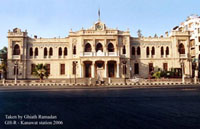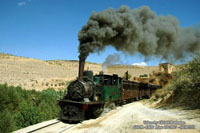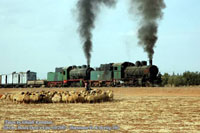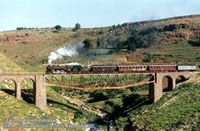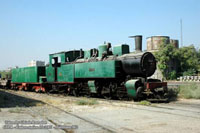History of the Hejaz Railway The Hejaz Railway was originally built to transport pilgrims from Damascus to Madinah, where they would travel on to Mecca for the Muslim Pilgrimage. The idea was first put forward in 1864 during the height of the age of great railways around the world, but it was not until 40 years later (1908) that the Hejaz Railway came into being.
The building of the Hejaz Railway presented a financial and engineering challenge. Construction maintenance and guarding of the line all presented enormous difficulties, Driving a railway across the Arabian deserts proved very difficult. The ground was very soft and sandy in places and solid rock in others. There were also major geographical obstacles to cross, such as the Naqab Escartment in southern Jordan. While drinking water, and water for the steam engines was a problem, winter rainstorms caused flash floods, washing away bridges and banks and causing the line to collapse in places. On 1 September 1908 the railway officially opened, and by the year 1912 it was transporting 30,000 pilgrims a year.
This was to be the railway's undoing, as it was severely damaged during the First World War (1914-1918), by Lawrence of Arabia and the Arab Revolt. The old Arab tribes that guided and guarded pilgrims now had the opportunity to turn their vengeance on the railway. While many claim that it was not their intention to destroy the railway, but rather attack the supply lines of the retreating Turkish army, the railway was destroyed anyway. After the First World War, and until as recently as 1971, several attempts were made to revive the railway, but the scheme proved too difficult and too expensive. Road transport was soon established and, by the 1970's aviation had made rapid progress. The railway was soon abandoned and the huge old steam locomotives sat and rusted. But the romance of the railway remains alive.
|
Home ››
All About Syria ››
Trains



